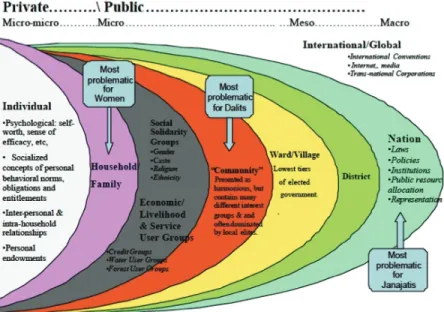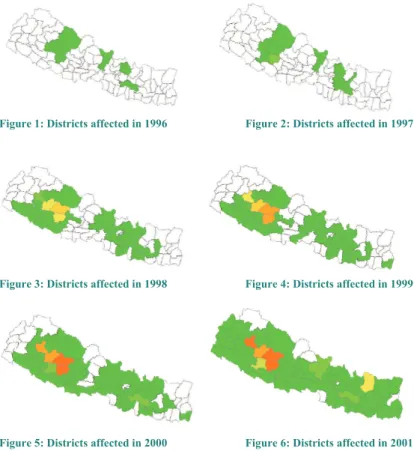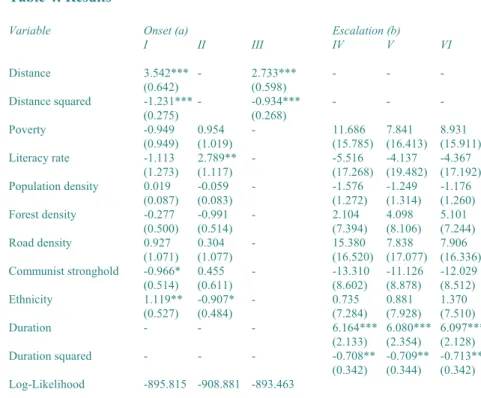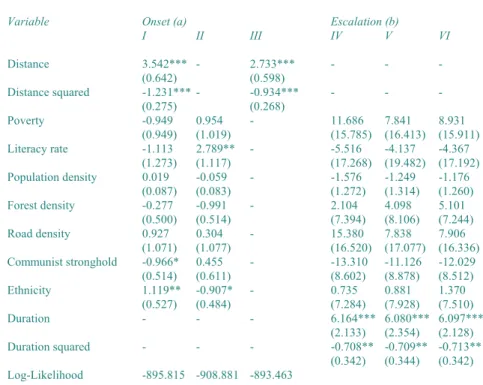A Spatio-Temporal Analysis of Civil War: The Case of Nepal." The Study Models the Spread of Nepal's Civil War Across Geography and Time. Bringing Back the Economy: The Political Economy of Security Sector Reform." The mechanisms underlying the relationship between development and security are difficult to define and poorly understood. The model presented in this article can be seen as a variant of negotiations in the "shadow of power."4 In these types of models, actors who have become sufficiently pessimistic about the likelihood of reaching a mutually acceptable solution resort to some form of force, be it legal, military or political.
The static model discussed here suggests that increasing judicial intervention is never increasing social welfare (even when judicial and political biases run in opposite directions, as shown later).8 Moreover, the analysis identifies a range of parameter values where social welfare increases as the degree to which ideological conflict is constitutionalized decreases (i.e. becomes more expensive and less effective, the link). The two parameters that characterize conflict are (1) judicial diversity, defined as the range of possible conflict outcomes, and (2) the degree to which legal conflict is constitutionalized, i.e., the degree to which judicial efforts are (a) more or less costly at the margin, and (b) more or less effective or decisive. Bearing this in mind, it is therefore very important, in establishing peace and security in Syria, to have a judiciary that has, not necessarily independence of duty, but independence of character, and that is open to, as Loewenstein says, "the postulates of a humanitarian morality".
An outline of the mathematics of the basic rights model is provided in the appendix.
Envy in the process of development
Implications for social relations and conflict
To the extent that envy avoidance strategies are successful, the balance between fear of envy is still peaceful, even if the anticipation of hostility adversely affects the creative activity of better-endowed individuals. The limitation of fear of envy is binding and as long as the threshold of tolerance is not exceeded there is no actual destruction. Depending on the type of equilibrium, the marginal effects of envy on economic performance are just the opposite.
Within the KUJ equilibrium, stronger concern about the relative state encourages investment that yields higher aggregate output, as long as a threshold tolerance for inequality is not exceeded and society does not move into the fear-envy region. As the factors that determine the equilibrium outcome of the envy game are subject to change, so is the dominant side of envy. Anecdotal evidence suggests that a change in the role of envy is indeed driven in part by expanding economic opportunities.
Beyond preferences, there is an important connection between culture and the two sides of envy. In particular, behavior related to envy, corresponding to the dominant role of envy in society, is strangely embedded in cultural norms and beliefs. Culturally, this manifests in a set of beliefs sometimes collectively called institutionalized envy, which includes, among others, envy-motivated fear of witchcraft and the belief in the evil eye.
In the rational theory of envy described in the first part of this essay, the balance of fear requires that people, among other things, know precisely the tolerance threshold of their reference group. Other, perhaps less harmful, responses to the fear of envy are wealth concealment and (preventive) sharing. Symbolic and ethnic aspects of envy among a Teneek community (Mexico). Journal of Anthropological Research.
A spatial-temporal analysis of civil war: The case of Nepal
I use the number of votes the Communist Party received in the 1994 House of Representatives elections as an indicator of whether an area should be considered a "Communist stronghold". Although part of the ruling elite in the early years after unification, over time they became marginalized and now consider themselves neglected by the government. Together with "communist stronghold", the two variables are indicative of local politics and are believed to reflect the strategic importance of a location.8.
Mean (std) Mean (std) Mean (std) Cumulative deaths per a) Communist stronghold is the percentage of votes received by the Communist Party in the 1994 House of Representatives elections. This is done to test whether the results are comparable to other studies of war if the spatial nature of war is not taken into account. For example, if poverty affects how quickly a district is drawn into war, then it is possible that poverty also affects the intensity of violence in the district.
The Economics of Peace and Security Journal, ISSN 1749-852X Silwal, Civil War in Nepal p. www.epsjournal.org.uk – Vol. contagion, or geographical spread) and escalation (intensity of violence over time). As such, areas with a higher concentration of Communist Party supporters were engulfed by war earlier in the uprising. In both cases – distance and duration – the statistically significant negative sign on the squared terms says that the further a district is in space and time when violence is first experienced, the better.
Qualitatively, this is not surprising news, but the news of this article lies in the quantitative demonstration. But at least during the initial phase of the Nepalese war, Maoists sought refuge in neighboring India, not in the hinterland of Nepal. The Power of Place and the Future of Spatial Analysis in the Study of Conflict." Conflict Management and Peace Science.

The political economy of peacebuilding: The case of women’s cooperatives in Nepal
The idea of peacebuilding entered international relations in the 1990s in response to the spread of post-Cold War political instability and violent intrastate conflict in newly formed, newly liberated and newly democratized countries of the Global South. Moving beyond liberal peace and demonstrating a growing interest in "the political economy of the grassroots levels", bottom-up peacebuilding deviates from orthodoxy without precluding its use. Members engage with their own households and the wider community on issues such as gender, caste, religious and ethnic discrimination, emphasizing the importance of "going with the times" in the new Nepal.
In the run-up to the Constituent Assembly elections, SACCOs worked for women's representation in the Assembly and for their rights to citizenship and property in the new constitution. While peace could simply mean the absence of violence (negative peace for Galtunga), SACCOs go beyond this definition and articulate a “positively defined condition” for peace, viz. absence of structural violence and egalitarian distribution of power and resources. 18. Nepalese SACCOs have often acted as vessels for liberal peacebuilding interventions, for example by providing a ready audience for top-down peace education, consciousness-raising workshops and democratic education, and have been platforms for social engineering in the post-war context.
SACCOs actively participated in liberal peace education programs aimed at building "good citizens" in the new democracy. While cooperatives can allow peace agendas to be formulated through bottom-up processes, the experiences of SACCOs raise further questions about the role of "the local". An excessive view of the local as a means and counterbalance. Cooperatives allowed: This largely depended on the nature of the organization and how it was perceived in the local communities.
Commodification: Given the specific concerns of war economies – namely that war leads to economic activity dependent on its own continuation – the economics of peacebuilding have recently been emphasized as essential to ending war and achieving lasting peace (EPIC, 2007, in Herring, 2008). Start-up organizations like most SACCOs in Nepal face great challenges, especially in the context of post-war scarcity. Ultimately, deeper explorations are needed of the complex ways in which the local interacts with the global, and how viable resistance to the liberal model can be formulated in the post-war terrain.
Likewise, co-operatives in the Terai (plains) recognized the imbalances in co-operative leadership between the so-called upper castes (who were dominant) and the Madhesi castes (native to the plains). Peacebuilding in Rwanda after Genocide: The Role of Cooperatives in Restoring Interpersonal Relationships." Ph.D.

Bringing the economy back in: The political economy of security sector reform
But the development of the state system we have in Europe today is inherently European, not universal.4. State building and security sector reform are closely linked: Increasing the effectiveness of the state often includes increasing its ability to enforce order and security.5. Corrupt political elites can oppose reforms and resist change because they benefit economically from the weak institutional capacity of the state, as in Bosnia and Herzegovina.
In contrast, in the new Afghan state, a large amount of power has been vested in the office of the president. Reform in the civil security and judicial sectors has been protracted and inconsistent. The second major obstacle to effective SSR in Afghanistan is the power of warlords.
Thus, it effectively thwarted larger state-building efforts and helped undermine the legitimacy of the Afghan state. Instead of contributing to the growth of the Afghan state, they actually undermined the legitimacy of the state. 16. Therefore, they resist these efforts both in the central government and through their control over the provinces.
For example, the president of the Federation of Bosnia and Herzegovina, Živko Budimir, has been accused of actively opposing a restructuring of the Federation's government. The unwillingness of the political elite to act against corruption and organized crime suggests that reforms in the justice sector are unlikely in the near future. Several analysts argue that corruption and cronyism have hindered reform and capacity building of the Bosnian state, including its security sector.
In Bosnia and Herzegovina, the excessive emphasis on market liberalization together with endemic political corruption and criminalization of the state has reduced public trust in the BiH government and seriously damaged relations between the state and society. Afghanistan: State Building in the Shadow of the Warlords and the 'War on Terror',” p.


